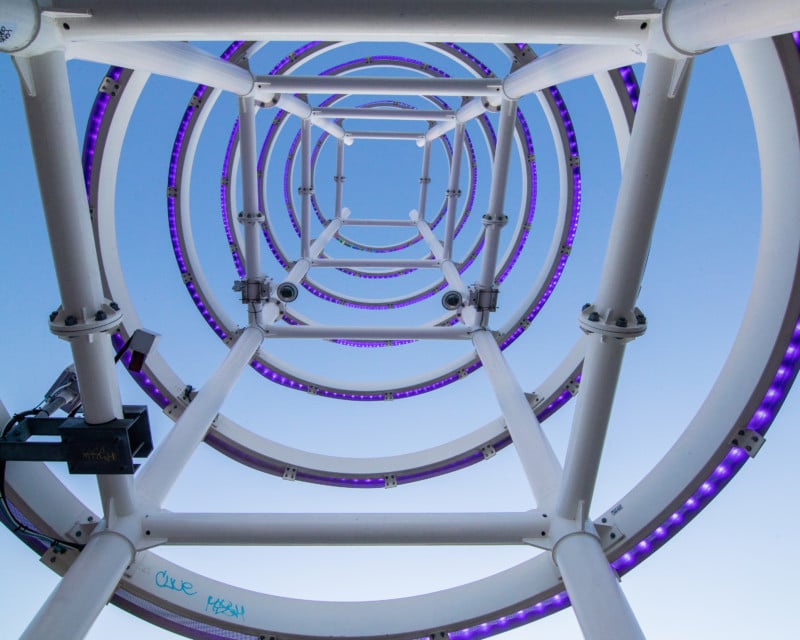108 vs 24: Why More Megapixels Do Not Necessarily Matter
Seasoned photography experts may understand why the 108-megapixel camera on the Samsung Galaxy S21 Ultra does not necessarily mean the best photos, but in this 5-minute video, Kevin Raposo quickly explains why it isn’t better than a 24-megapixel standalone camera.
This video is meant to be a quick explanation of why more megapixels doesn’t necessarily mean better photos and is meant to show and explain how megapixels actually work. As such, it’s not a deep-dive technical explanation but should be an easy reference for anyone who may fall victim to the most popular marketing tool for companies: megapixels.
As part of his explanation, Raposo took the Samsung Galaxy S21 Ultra out and shot a series of photos with it as well as the same images captured at the same focal lengths on a Canon 1DX Mark II to demonstrate image quality differences.
“Galaxy S21 Ultra pictures are completely unedited, aside from light cropping,” Raposo writes. “They were shot in .jpg format using the native camera software, using various modes (including ‘pro’ mode, night mode, and portrait mode).”
To match colors, the Canon images are slightly edited.
“Canon 1DX Mark II pictures were shot in .cr2 format, lightly cropped and processed to match the colors of the Galaxy S21 Ultra, then exported in .jpg format. Examples of ‘light processing’ would include adding +20 to the shadows or slight white balance adjustments. No clarity, tone curves, or anything more creative.”




In various side-by-side tests, even without cropping into 100%, some differences should immediately be noticeable. That said, Raposo shows side by side 100% crops in his video above.








What you should notice are that while the Samsung images are larger, the actual quality of those pixels isn’t nearly up to the bar set by the Canon.
Many of you might be thinking that this test was pointless and that of course, the smartphone isn’t going to compete with the Canon. The thing is, photographers know this, but general consumers and even prospective clients don’t.
“Many consumers might be inclined to believe that more is better,” Raposo says.
These high-bar stats that are blasted in company marketing may not fool a photography enthusiast but they do play a major role in the perception of what photography is and what kind of technology is actually available.
The thing is, more megapixels can mean better quality in some cases, which further confuses the issue.
“In some cases… the more megapixels you have, the more detail in your shot which can increase the perceived sharpness of the picture,” Raposo explains. “This is because of a technique called downsampling, which involves taking a picture with a high number of megapixels and reducing it down to a lower number of megapixels. If done correctly, this can help hide imperfections like camera noise or motion blur.”
Obviously, higher megapixels are also great for cropping and making large prints.
Raposo experiments with the idea of downsampling by taking the 108-megapixel photo and compressing it down to 24 megapixels to compare it side by side with the Canon and the results don’t’ really show the Samsung making an overall better image. In fact, it can be argued the Canon still beats it. This is because despite the more megapixels, physically the Samsung has a smaller sensor and smaller, cheaper, more compressed optics.
What should be noted is how well the Samsung does with the downsampling to 24 megapixels when you consider how much smaller it is than the Canon: while smartphone tech is still not going to match full-size cameras, there is a lot to be said for how far they have come. The images here are not bad at all and do come close to the Canon’s performance in some conditions once you downsample those big files into something more manageable.
The biggest differences between images are the most noticeable when sensors are pushed to higher ISOs in low light.
“It is physically impossible for the Galaxy S21 Ultra to capture the same amount of light and detail,” Raposo says.
Raposo is correct in saying that there is just no way that the Samsung could hope to beat the Canon in a side by side test… yet. Right now, limitations on physical size prevent it, but there are hints that new technologies will be able to allow smaller sensors and optics to gather just as much light as larger devices in the near future. Metalenz is claiming its new technology can do just that.
For now though, if you know someone who isn’t sure what you mean when you say a smartphone camera isn’t as good as a full-size camera, use these examples to point out that, for now, more megapixels don’t always mean better photos.